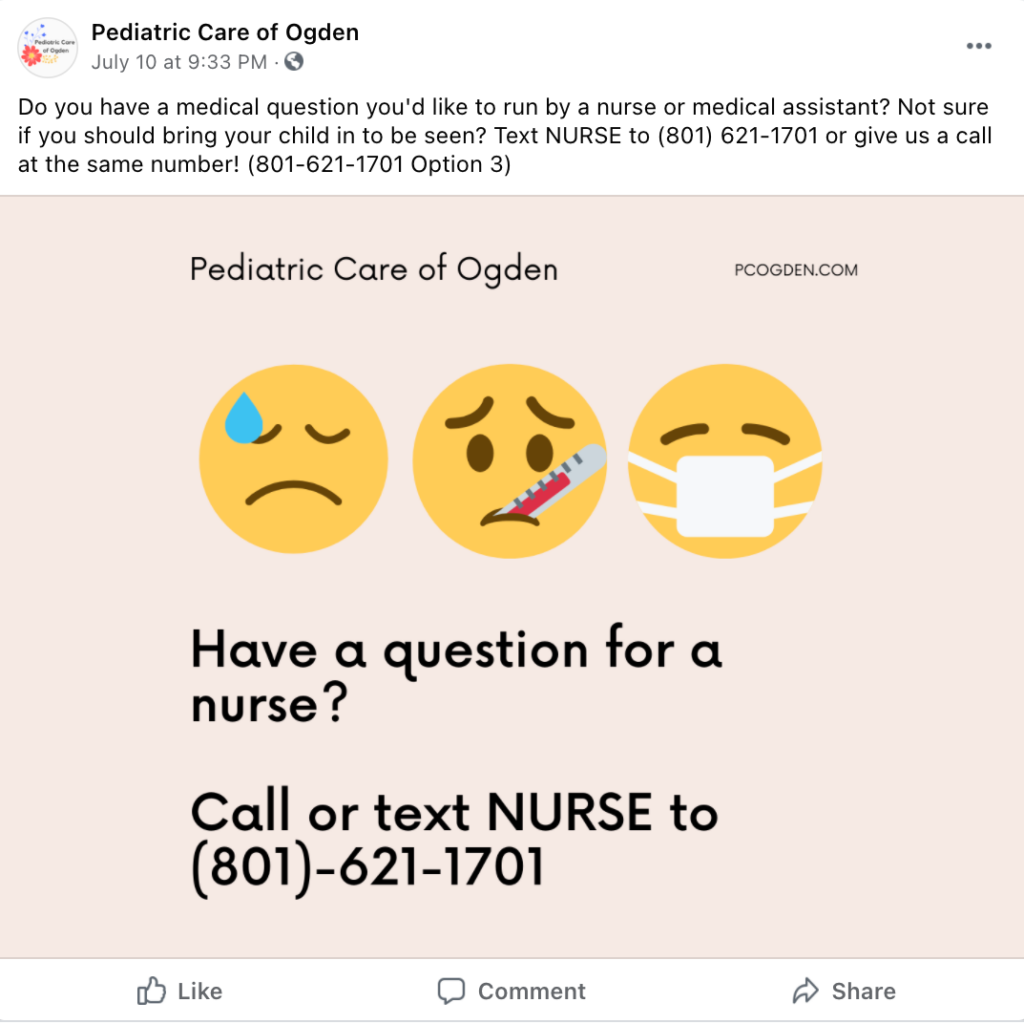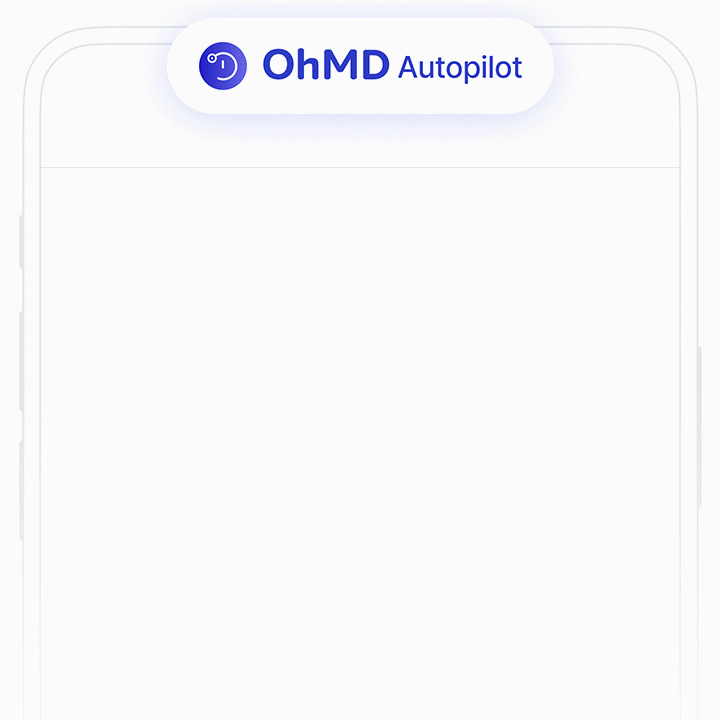CASE STUDY – AUTOMATION AND BULK APPOINTMENT REMINDERS GIVES STAFF SUPERPOWERS
CHALLENGES
- Arduous task of manually sending appointment reminders, sometimes taking the entire day for staff
- Inquiries via call getting missed or patients not bothering due to lack of time
- Incomplete and large number of forms daunting for both patients and staff
SOLUTIONS
- OhMD Broadcast simplifying the process of sending reminder texts in bulk
- OhMD Autopilot automating responses to common inquiries via text
- OhMD Forms streamlining the process of patient intake via text and reducing manual entry
RESULTS
- 13% decrease of no-shows (from 8 no-shows to 1-2 out of 55 patients) thanks to reminder messages
- Manageable call volume thanks to asynchronous text option
- No manual transcription of electronic intake forms that patients can fill out prior to arrival
A pediatric practice offers busy parents more convenience with two-way texting and automated appointment scheduling
Pediatric Care of Ogden has found success with automation in healthcare, automating repetitive tasks while still prioritizing a personalized patient experience.
Before Pediatric Care of Ogden began using OhMD in June 2020, their biggest challenge was having to send appointment reminders one by one to patients. Jennie Griffin, Team Leader for Patient Advocates/Front Desk at PCO, used to spend every Friday from eight thirty in the morning to five at night sending reminders and tracking confirmations.
“A whole day where I couldn’t answer the phone and I really couldn’t do anything else because I was having to individually send the text and then wait for those responses to finish what I had to do on our end for our system,” says Griffin.
Now PCO staff use OhMD Broadcast texting to send appointment reminders to patients in bulk, expanding automation in healthcare. It has saved an enormous amount of time. “I send broadcasts every day. Now we can run the report, send it and it’s not an all-day thing,” says Angela Shaffer, Patient Advocate/Front Desk. She broadcasts appointment reminders, information confirmations, vaccine and flu shot reminders, checkup reminders, and developmental forms to be filled out pre-appointment.
“Broadcast texting has been much easier on staff because now I don’t have to be babysitting all day. I can just send the appointment reminders in the morning and then I can be answering people who text in during the day.”
Angela Shaffer, Patient Advocate/Front Desk
Broadcasting vaccine reminders means few PCO patients get behind on their vaccinations. “Broadcast texting has been much easier for the staff because now I don’t have to be babysitting all day. I can just send the appointment reminders in the morning and then I can be answering people who text in during the day.”
Sending appointment reminders by text has tremendously decreased appointment no-shows. Shaffer normally sends reminders on Fridays to patients with appointments the following week. One week when she was unable to send reminders on Friday, the following Monday presented eight no-show patients out of 55 scheduled. On weeks when she does send the broadcast, there are only one or two no-shows per day. That’s a 13% decrease in no-shows when appointment reminders are sent by text.
Shaffer said many parents no longer pick up reminder cards from the front desk when they leave, because they know they can count on appointment reminders via text.
PCO was one of the first practices to use OhMD Autopilot, an example of automation in healthcare which helps to automate responses to common patient inquiries via text. They added a prompt to their website and phone line informing patients to text “visit” to the practice number for appointment scheduling, “refill” for prescription refill requests, and “nurse” for the nurse line. “I have a lot of people just hang up right then and text because they know it’s going to be faster,” says Shaffer. PCO also posted on their Facebook page letting parents know to text “nurse” when they’re not sure if a child’s symptoms require an appointment.

When patients text “visit”, Autopilot asks the necessary questions to schedule an appointment and summarizes their response in the chat thread for practice staff. Staff can jump into the chat at any time, maintaining the personal touch their patients appreciate while leveraging automation in healthcare. “The ‘visit’ option is really, really useful,” says Shaffer. “A lot of the moms who work during the day love it because they can just text us when they get a minute, so it’s much easier for them to schedule because they can’t necessarily call during our business hours.”

We get a lot of “we love your texts”, so that’s always really nice to hear.
Jennie Griffin, Team Leader for Patient Advocates/Front Desk
PCO also uses OhMD Forms which are sent to patients directly by text or filled out from the practice’s secure Patient Forms page. Shaffer says eForms are especially useful for parents of newborns, who have numerous intake forms to fill out before the baby’s first appointment. They can complete and sign demographic and consent forms from their smartphone at the hospital so that when they arrive at PCO they go straight into the exam room.
Before using eForms, the process to collect forms required more manual work for parents and PCO staff. New parents would have to fill out over 4 different forms in the waiting room before their appointment. The rush to get things filled out while watching a baby meant many forms were left incomplete, creating follow-up tasks for front desk staff. Then, the PCO team would have to transcribe information from the paper forms into the medical chart.
With eForms, parents can complete forms on their own time and in their own space. Then eForms can be saved directly to the patient’s chart, so no manual transcription is required. Griffin says the fact that more eForm packets come back complete than paper packets is a testament to the efficacy of texting forms in advance.


